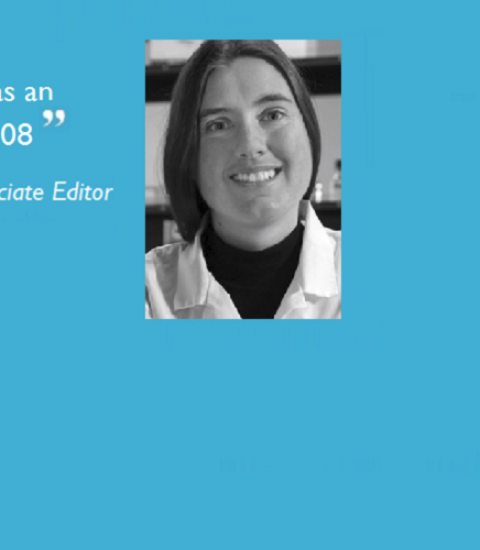
Amsterdam, NL – In no particular order, we would like to introduce you to the people behind our new open access publication.
Canadian-based, biomedical engineer Stephanie Willerth, PhD is the latest new Associate Editor of StemJournal that we introduce. Stephanie received her undergraduate degrees in biology and chemical engineering from the Massachusetts Institute of Technology, USA, before moving on to gain her PhD in biomedical engineering from Washington University and then postdoctoral work at the University of California-Berkeley.
She currently holds a Canada Research Chair in Biomedical Engineering at the University of Victoria (recently renewed for another 5 years), where she has dual appointments in the Department of Mechanical Engineering and the Division of Medical Sciences as an Associate Professor. She also serves as the Acting Director for the Centre for Biomedical Research and on the steering committee of the BC Regenerative Medicine Initiative.
Within her interdisciplinary research laboratory, the team investigates how to engineer neural tissue by combining pluripotent stem cells, controlled drug delivery, and biomaterial scaffolds. In 2014, Stephanie was named a ‘‘Star in Global Health’’ by Grand Challenges Canada and, in 2015, she was named a “Young Innovator in Cellular and Molecular Biology”. In 2016, she began a sabbatical at the Wisconsin Institute for Discovery supported by the International Collaboration on Repair Discoveries International Travel Award where she wrote her book Engineering Neural Tissue Using Stem Cells (Academic Press, 2017).
Since that time, her research on 3D printed tissue has been making headlines. For her new tissue-printing project, she teamed up with BC tech firm Aspect Biosystems and is using its latest 3D printing technology to create models of neural tissue. The goal is to reach the stage where pharmaceuticals will not need to be tested on animals and, instead, drugs can be tested on the 3D printed cells.
Stephanie’s work on combining stem cells with biomaterial scaffolds has long since provided a promising strategy for engineering tissues and cellular delivery, as covered in her 2008 article in StemBook. She comments, “I'm excited about the launch of StemJournal, having served as an author on one of the original Stembook chapters back in 2008." You can read the open access article in question here!



